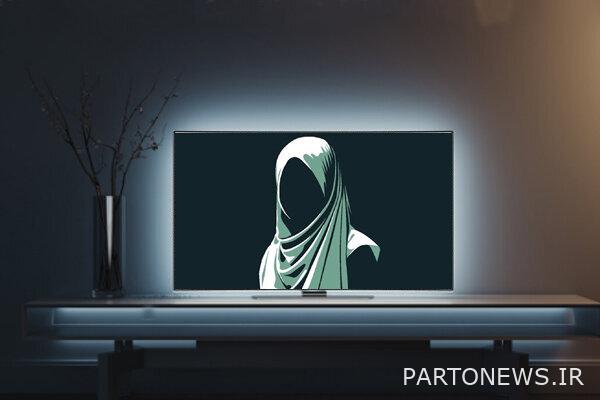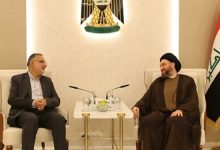The reality of society is far from the performance of radio and television in the field of chastity – Mehr News Agency | Iran and world’s news

Mehr News Agency – Religion and Religion Group – Negar Ahadpour Eghbalagh: The religion of Islam is a “universal” and “eternal” religion and has come to explain and regulate the relationship between “God”, “man” and “the world”. Such a religion, in order to realize the characteristics that result from its “finality”, must be propagandistic in nature and use all its capacities to spread its heavenly concepts and messages to all human beings forever and everywhere, and the completion of the argument will be achieved. To this end, religious missionaries have used and continue to use the media to spread and propagate themselves. With the emergence and expansion of new media, more attention must be paid to the relationship between religion and the media. Because the media has a fundamental role in promoting spiritual and moral ideas, especially in the field of religion. Among the media, television seems to be the best medium for the rapid and widespread promotion of religious discourses due to its wide audience. Mehr News Agency examines the religious status of the media and the relationship between religion and the media in a series of reports and conversations, which you can find in Here look. One of the important issues in the field of religious propaganda is the issue of chastity and hijab.
In this regard with Somayeh Sadat ShafieeA sociologist and a member of the faculty of the Institute of Humanities and Cultural Studies, we had an interview, the result of which you can read below:
In an interview with Mehr, Somayeh Sadat Shafiei, reviewing and evaluating the performance of the Radio and Television in the field of chastity and hijab, said: “As someone who has been focusing on the field of women’s sociology for many years, I paid attention to the life of girls and considered the three main indicators of hijab, makeup and the relationship between the sexes of girls and boys. Get acquainted (gain, obtain) with present-day techniques that came from Programming, and be aware of these policies in the first place.
He added: “But due to the difficulty of accessing these policies outside the organization, our evaluation is only based on external manifestations, because these policies are often distributed at the level of managers and the organization’s plans are produced according to the details contained in it.” And by the way, we see that these policies are very effective in programming, and its examples, such as dealing with the details of people’s relationships, open and closed views of people by gender, and other minor issues are separated in these policies. Therefore, it is natural that when these policies are internal and we as researchers do not have access to them, our evaluation is based only on the external representations of the programs that are displayed.
Maximum coverage of women is the focus of national media policies in the field of chastity and hijab
Referring to some of the policies of the Radio and Television of Iran, Shafiei said: “According to the studies that have been done on the policies of the Radio and Television of the past decades, the weight of policies related to women’s clothing and hijab outweighs other matters and provisions of policies and laws.” A kind of centrality of the policies of chastity and hijab is more on the maximum coverage of women, and a few cases have been dedicated to the non-display of men’s limbs and to cases such as avoiding the display of short sleeves.
He emphasized: “But what is more important than other cases is the priority of showing women with chadors, avoiding showing faces with women’s make-up and avoiding close-ups showing women with faces, as well as things like avoiding sincere relations between the presenter and the audience in programs.” Interaction where the performer and the audience are heterosexual. So quantitatively, if we want to take into account, the bulk of the burden of hijab and chastity policies, at least until the period I was able to observe and have access to it, has focused more on women.
The faculty member of the Institute of Humanities and Cultural Studies added: “But this decision and policy-making raises the question of whether this emphasis on maximizing women’s coverage can necessarily lead to chastity.” Is the idea of legislators and directors of radio and television to create chastity efficient and useful? This issue is very important and shows that despite the many cultural changes that have taken place in Iranian society in different decades and the various developments that we are witnessing, especially in the field of women, but the policy-making and legislative mentality in radio and television is still a collectivist mentality. It also pays attention to the ideals, ideals and values that are the main form of approach to women in a particular historical period. Now, to what extent this is in line with social change is another matter. But in any case, we can see this gap, and on the other hand, we can see to what extent the issue of chastity, which is a moral and sex-free matter, is overshadowed by the issue of hijab and maximum coverage of women.
National media policymakers’ perception of chastity and hijab; True or false?
Referring to the perception and reading that policymakers, managers and legislators of the Radio and Television have about chastity and hijab, he said: This view leads to women wearing maximum coverage, such as a headband and a scarf or shawl on it. For example, for a character who is at home and seemingly busy with daily chores, or for a character who sings lullabies to him next to his child. Well, this issue is in fact far from the reality in our society, especially the urban society, and the rate of urbanization shows that we face a great variety of coverage with ethnic, religious, capital, cultural and similar aspects, and it is a real thing that Whether or not it manifests itself in a dynamic way due to its social nature. Especially with the waves of consumption of our society that the subject enters a new life and sometimes emerges in unbridled form.
Shafiee added: “This gap widens when a wide range of national media audiences do not see similarities between themselves and these characters and can not see themselves in their form. Unfortunately, this also applies to production programs, series, competitions, mixed programs and cases based on We see the plot and the script, as well as the documentary programs related to everyday events, so when you, as an audience, do not see yourself among the types of characters that are presented on the radio and television, you are not familiar with it and the message should be from the programs. You do not get this media. For this reason, the form of entertainment that the national media can play, along with influencing and conveying the message, is gradually being realized. A clear example of this distinction is the reports that are taken from young women and students during elections and the reports that are taken from other circumstances. Clearly, in the reports that are produced and broadcast during the elections, we see that the gender ratio of those who participate in those reports differs from those who participate in reports at other times, and the number of women is the same as that of men, while on normal days This is less likely to happen, and on the other side of the debate is the hijab of those who participate in radio and television reports. They have hair because the purpose is to show the popular origin of the system, but on normal days, we do not see such people on TV.
On special occasions such as elections and marches, those featured in the national media may not necessarily be veiled and may wear a more loose veil in terms of showing their hair because it is intended to show the popular origins of the system, but on normal days, such people We do not see it in the TV frame
The researcher of women’s sociology continued: “All these actions take place in a situation where we are in the midst of a wave of various popular satellite programs and competition of Persian-language channels managed abroad, serials in which women are adorned with appearance.” And have an attractive style for the audience in terms of coverage and lifestyle. In this competition, specifically those Iranian audiences who can not position themselves between the programs of the radio and television and the national media, prefer other channels. In other words, in this breathtaking competition, the national media is faced with a loss of audience and the impact and function that is expected from it is not realized.
Duality in the policy of chastity and hijab from television to VO Diha
Saying that the issue of chastity and hijab is a valuable issue, Shafi’i said: “Apart from the moral nature of chastity and hijab, which can be based on religious and individual ethics, especially the issue of chastity, but we have a common and coordinated action by decision-making bodies We do not see the field of culture in this matter, as if the same actor who plays in a movie or series on the radio and has a 100% hijab, at the same time plays in the movies of the home theater network and VODs and in his play, the show. Hair, makeup and more intimate relationships with the opposite sex. This shows that the home theater network and VO Diha operate according to the rule of supply and demand and the discussion of economic benefit and higher sales, and therefore are allowed to leave the red lines in the field of chastity and hijab to some extent for more sales. Also, when we look at the movie magazines that are the result of the approval of the staff and officials of the Ministry of Culture and Islamic Guidance, we see that they have been neglecting the issue of maximum hijab for years, showing the faces of women sometimes wearing make-up and close-ups. Especially seen on the cover of popular magazines. While this issue is inconsistent with the criteria of another part of the cultural management of the country, which is radio and television. Well, the Iranian actor has the right to ask why these contradictions. Therefore, one of the most important points is that the institutions that are active in this field, have not been able to jointly and coherently advance this issue, and this is a matter of much debate, and it is not only about radio and television and critique of its performance, but also about its nature. The issue of policy-making and policy-making in the field of chastity and hijab as a cultural issue, I emphasize, is an issue that can be raised in the field of culture.
Benefit from the expertise of concerned women in policy-making chastity and hijab
Shafiee went on to state a solution in this regard: The place of concerned women who have studied and researched in this regard for years is empty in policy councils; Ladies who have knowledge related to this field and have observed changes, in any case, we need experts from the field and the university who, as advisors to the officials and directors of the Radio and Television, with aristocracy in the field of women’s studies, sociology Women, social psychology and cultural studies, not as a ceremonial authority but as a scientific and research reference that, given years of activity, can now share their experiences and knowledge with policymakers.
The same actor who plays in a movie or series on the radio and has a 100% hijab, at the same time plays in the movies of the home theater network and VODs, and in his play, shows hair, makeup and more intimate relationships with sex. Has the opposite. This shows that the home theater network and VO Diha are allowed to remove the red lines in the field of chastity and hijab to some extent for more sales.
He added: “It is time to pay attention to the opinions and thoughts of these women, their experiences and research in this field, and to reflect the presence of women.” It is time for concerned women to enter politics with high degrees, to express their views, to criticize, and even to address the issue of chastity with new and subtle perspectives. We see that some men who have a long executive record and may not have a relevant education sit on policy councils and make decisions for all audiences, both men and women. The question is whether 4 decades after the Islamic Revolution, among the educated and skilled women who in the light of the glorious Islamic Revolution and the importance of the role and social mission of women in post-revolutionary society, especially in the difficult days of holy defense, can not be the source of much influence. Elected and established a gender balance in these councils and thus a legislative view? However, we are witnessing the policy problems of the various councils in the society.
The need to coordinate national media policies with the reality of society
This faculty member of the Institute of Humanities and Cultural Studies pointed out: Our radio and television and its productions with the reality of today’s Iranian society; At least in terms of the issue of chastity and hijab, there is a long way to go, the fact is that based on the cost of the treasury, programs should be made for the human excellence of Iranians and our compatriots abroad. In order to value them, both men and women, in planning, the complexities of today’s Iranian society must be taken into account, and youth and cultural uses must be given importance in policy-making. The role of women should be considered alongside the role of men, and all this is possible only when the voices of women are heard, the voices of women who, thanks to God, were able to have higher education in these four decades under the Islamic Republic and with commitment and motivation. Various knowledge and professions, show their ability, organize important projects and were able to participate in scientific societies, scientific, specialized and professional councils.
In the end, he said: “Programming should go in the direction that the concerns and demands of the audience are conveyed in a real way and with a scientific and futuristic view in the form of internal policies of the Radio and Television of Iran.” There is talk of various types of radio and television surveys, but their validity and validity must be seriously evaluated. Of course, we have to move forward given the sensitivities that exist in our society, but we are concerned about the reality we see in society, we are concerned about the poison of fragrance that is poured into the mouths of our men and women through satellites and satellite networks. Especially during the corona outbreak, when we see more people living in different age groups and groups, and if we do not take action, we will suffer from disruptions and anomalies more than before.

